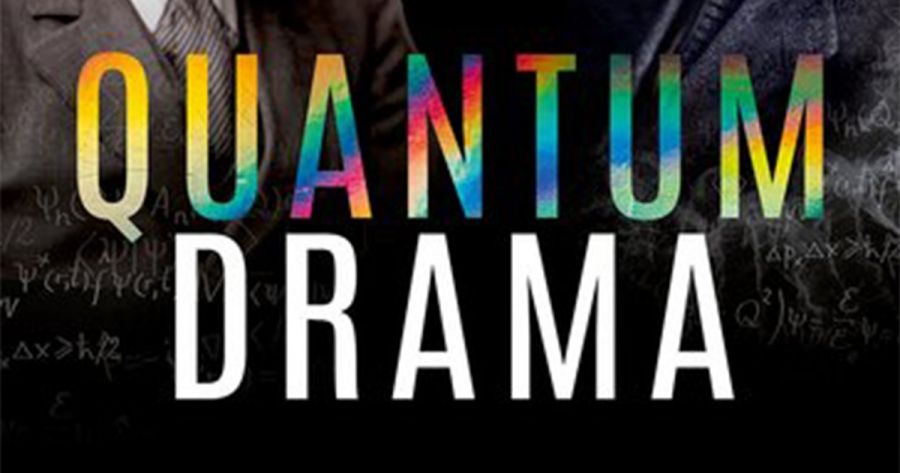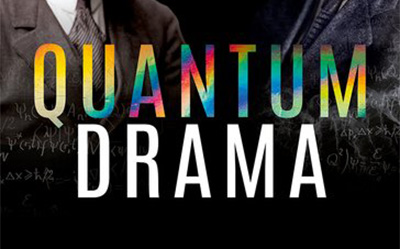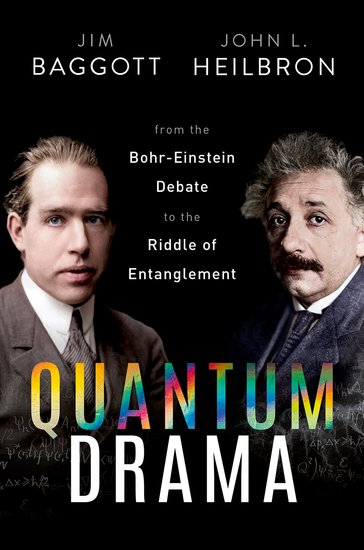
- Free Article: No
- Contents Category: Science
- Review Article: Yes
- Article Title: Quantum Drama
- Article Subtitle: From the Bohr-Einstein debate to the riddle of entanglement
- Online Only: No
- Custom Highlight Text:
Let’s face it, quantum mechanics mystifies most of us. But as Quantum Drama shows, it baffled its creators, too – so much so that some of them turned to suicide, drink, or psychiatry (Carl Jung was a favourite). Who wouldn’t go crazy, trying to get their head around such bizarre happenings as subatomic particles sometimes being wave-like, and a theory that cannot tell you the particle’s definite state – its position and velocity, say – before you measure it? In ordinary ‘classical’ physics, by contrast, you can predict in advance every point on the trajectory of an ordinary object, such as a ball or a spacecraft, launched from any given place with any particular velocity. But quantum theory does not play by these long-established rules: until you observe the particle, all the theory can tell you are the chances it will show up at various places. As Einstein asked, ‘Do you really believe the Moon is only there when you look at it?’
- Featured Image (400px * 250px):

- Alt Tag (Featured Image): Robyn Arianrhod reviews ‘Quantum Drama: From the Bohr-Einstein debate to the riddle of entanglement’ by Jim Baggott and John L. Heilbron
- Book 1 Title: Quantum Drama
- Book 1 Subtitle: From the Bohr-Einstein debate to the riddle of entanglement
- Book 1 Biblio: Oxford University Press, £25 hb, 352 pp
- Book 1 Cover Small (400 x 600):

- Book 1 Cover (800 x 1200):

- Book 1 Readings Link: https://www.readings.com.au/product/9780192846105/quantum-drama--dr-jim-baggott-prof-john-l-heilbron--2024--9780192846105#rac:jokjjzr6ly9m
Einstein felt that such a theory was physically unrealistic, so he concluded that quantum mechanics was not yet complete. Instead, there must be ‘hidden variables’ not included in the theory, but which would indeed determine the state of a quantum particle before it was observed. But colleagues such as Niels Bohr and Werner Heisenberg were undaunted by Einstein’s doubts. For them, the mathematical theory was what mattered – and the predictions it made. Quantum mechanics might not tell you what was happening behind the scenes, but it does correctly predict outcomes such as the wave-particle duality, the quantised energy levels now applied in lasers and other microtechnology, and entanglement. The latter is the ‘spooky’ idea that when entangled quantum particles are separated, a measurement on one of them immediately determines the outcome of a measurement on the second. It is as if you randomly pick out a jellybean, and immediately your friend on another continent finds that their jellybean has the same colour as yours – no matter how many times you repeat the experiment.
It was Einstein who predicted the existence of entanglement. (He also predicted photons and lasers, so his quantum cred is high.) He made his entanglement prediction via a thought-experiment designed to show that quantum mechanics could not possibly describe reality, because entanglement was too bizarre to take seriously. And Bohr did worry, initially, that Einstein might have had the last word in 1935. That’s the year he and his Princeton colleagues Nathan Rosen and Boris Podolsky – Einstein had fled Germany after the rise of Nazi anti-Semitic persecution – published the definitive version of the entanglement thought-experiment. It is now known as EPR (Einstein, Podolsky, Rosen).
EPR still puzzles physicists, but one thing is certain: entanglement is real, with potential applications in cryptography and quantum computing. The 2022 Nobel Prize was awarded to the physicists who demonstrated this reality in the 1980s (with the help of lasers!), thanks to theoretical work by John Bell in 1964. Bell was one of the few who took seriously Einstein’s concerns over the foundations of quantum theory; Tony Leggett is another, according to our guides through Quantum Drama. They are science writer and researcher Jim Baggott, and the late science historian John Heilbron. Heilbron met Bohr, Heisenberg, and other founders of quantum theory in the 1960s. Einstein had died in 1955, but the debate between him and Bohr over the status of quantum theory is the foundation of this story – and, indeed, of the development of quantum theory and its interpretations.
The drama hinges on the nexus between language and reality – and between the observer and the observed. How can we understand the microworld through our everyday languages, when they have evolved in the macroworld we can experience through our five senses? How do we know where – or whether – to draw the boundary between the microworld of an electron, say, and an experimenter whose senses and measuring equipment are most definitely macro? As Baggott and Heilbron conclude, it is truly mystifying that physicists were able to ‘reach so deeply and quickly into a region they do not have words to describe’.
The authors also suggest that Bohr was so sanguine about the completeness of quantum mechanics because his psychological make-up, and the Danish philosophical tradition, fitted him to accept the seemingly irrational. This is another example of the way Quantum Drama humanises the key players. Others include the stories of quantum theorists drawn to communism or to 1960s countercultural mysticism, for both movements seemed to fit the radical nature of quantum mechanics and its apparent conclusion that the observer and the observed are intertwined.
The authors don’t give many scientific explanations, and in detailing a century of argument in chronological order, they don’t provide many indications of the outcome of the debates until the final chapter. So, lay readers may not know how much to invest in each argument, especially as there is technical jargon that they may have to take on trust. Yet the book is strangely compelling, not just for the extraordinary ideas it discusses, but also because it does such a good job of setting the theory in its wider context – cultural, political, and personal. Especially fascinating is just how many physicists drew links between cultural trends and this strange new physics – Pauli’s psychiatric dreams, Jordan’s embrace of Nazism and Heisenberg’s appeasement of it, Capra’s Tao of Physics (1975), various other mystics, positivists, Marxists, communists, and post-1945 anti-communists.
The quantum debate is far from over, and so, the authors conclude, the question of whether science should focus on getting results or finding deeper insights remains open. Meantime, Quantum Drama offers a rich history that highlights the very human mix of ego, idealism, prejudice, and courage that accompanies the genius of science.


Comments powered by CComment